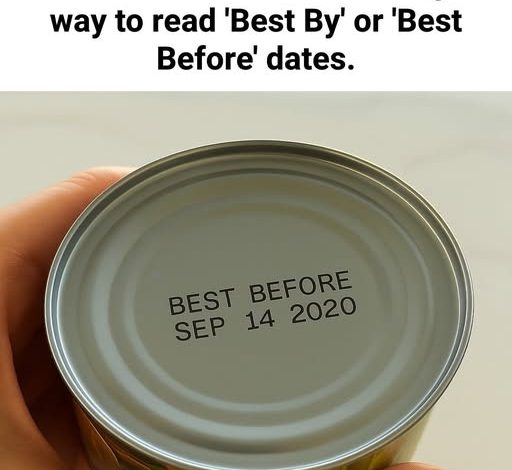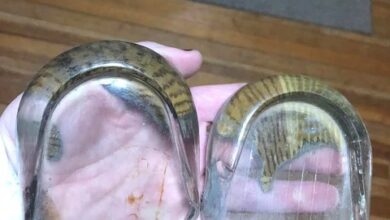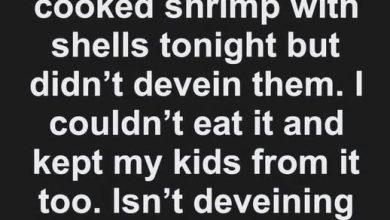What Happens When You Eat Expired Cans!

Hidden behind jars of pasta sauce and bags of rice, most pantries have a few forgotten cans — maybe beans, soup, or vegetables pushed to the back and left for years. When people finally find them, their instinct is usually to check the printed date. Seeing that it’s long expired, they toss it immediately. But in truth, most “expired” canned foods are still safe to eat. The dates printed on those labels rarely mean what people think they do — and understanding that difference can save money, reduce waste, and maybe even challenge a few long-held kitchen myths.
ADVERTISEMENT
The Real Meaning Behind Expiration Dates
Food labeling is confusing by design. Terms like “Best By,” “Best Before,” and “Use By” aren’t standardized expiration dates but manufacturer recommendations about peak quality.
ADVERTISEMENT
- “Best By” or “Best Before” indicates the period when the product tastes and looks its best. After that date, the flavor or texture might decline slightly, but it’s still safe to eat.
- “Use By” is generally reserved for perishable items like milk, deli meat, or fresh juices, where spoilage can happen faster. Even then, it’s about quality, not necessarily safety.
In the case of canned goods, these labels serve more as marketing tools than warnings. Canned food doesn’t suddenly become dangerous the day after its printed date. In fact, according to the U.S. Department of Agriculture (USDA), properly stored canned food can remain safe for decades — sometimes indefinitely.
ADVERTISEMENT
The Science of Longevity
The secret to a can’s remarkable lifespan lies in the preservation process. Canned food is cooked inside its sealed container at high temperatures, killing bacteria and creating a vacuum that prevents new microorganisms from entering. As long as that seal remains intact, the food is protected from spoilage and contamination.
Storage conditions are what truly determine how long canned goods last. A can kept in a cool, dry, dark place — ideally below 85°F (29°C) — can outlast its label by years. Heat and humidity are the real enemies. They can corrode the metal, compromise the seal, and slowly degrade the food inside.
Different types of canned foods age differently:
- High-acid foods (like tomatoes, tomato sauce, pineapple, or citrus fruits) last around 12–18 months. Their natural acidity helps inhibit bacteria but can gradually wear down the can’s lining.
- Low-acid foods (such as beans, corn, peas, carrots, potatoes, and canned meats) can last three to five years — sometimes longer — without losing much quality.
If stored properly, even cans sitting quietly in your pantry for a decade can remain edible.
When “Expired” Doesn’t Mean Unsafe
Let’s be clear — just because a can is past its printed date doesn’t mean it’s gone bad. That date is about optimal quality, not a biological countdown. If the can looks normal — no rust, bulging, dents, or leaks — chances are the food inside is still fine.
When you open an older can, use your senses:
- Look — The food should still resemble its original color and texture.
- Smell — Any sour, rancid, or metallic odor means toss it.
- Taste (carefully) — If it smells and looks fine, try a small amount. A metallic or “off” flavor means it’s better to discard it.
Most canned goods past their “Best By” date are perfectly safe, but the texture or taste might have dulled slightly. Green beans may lose crispness, and soup might taste less vibrant — but they’re still nutritious and edible.
The Real Danger Signs
Despite their impressive shelf life, canned goods can still become unsafe if damaged. Certain warning signs should never be ignored:
- Bulging cans: This can indicate gas buildup from bacterial activity — a classic sign of botulism contamination.
- Leaking cans: Any moisture, especially if sticky or discolored, means the seal has been compromised.
- Deep rust or dents along the seams: These can break the airtight seal and allow bacteria in.
- Foul smell or fizzing upon opening: Gas release or a bad odor means bacteria have been at work — throw it away immediately.
The biggest concern with damaged cans is Clostridium botulinum, a bacteria that produces a deadly toxin causing botulism. While rare, botulism can be fatal even in small amounts. It thrives in oxygen-free environments — exactly what a compromised can provides. If a can is bulging, leaking, or hissing unnaturally when opened, don’t risk it.
How to Store Canned Goods Safely
To maximize shelf life and safety:
- Keep them cool and dry. Avoid garages, sheds, or attics where temperatures fluctuate.
- Rotate stock. Follow the “first in, first out” rule — use older cans before newer ones.
- Check periodically. Once or twice a year, inspect for rust, dents, or swelling.
- Avoid storing near heat sources. Prolonged exposure to high temperatures accelerates deterioration.
If stored correctly, even older cans can remain safe for decades — though taste and color may fade.
The Problem With Food Waste
Every year, millions of tons of food are thrown away because of misunderstood labels. Studies show that over 80% of consumers believe “Best Before” means the product is unsafe after that date. In reality, it simply means it might not taste perfect.
This confusion leads to enormous waste. Perfectly good food ends up in landfills, while households spend unnecessary money replacing it. Canned goods, in particular, are among the most wasted — despite being some of the most durable food products available.
Learning how to read and interpret food labels isn’t just about thrift; it’s about sustainability. Reducing waste helps conserve resources and supports food security by ensuring edible products are used rather than discarded.
The Bottom Line
Canned food is one of the safest and most stable forms of preservation ever invented. As long as the can is in good condition and has been stored properly, its contents can remain safe for years — sometimes even decades — past the printed date. The key is to trust your senses and use common sense.
Next time you find a dusty can of soup or beans hiding in the back of your pantry, don’t rush to throw it away just because it’s “expired.” Check the can, inspect the contents, and decide with care.
Understanding the science of canned preservation not only protects your wallet but also helps combat one of the biggest contributors to global waste — our collective fear of “expired” food.
So before you toss that old can, remember: a date on a label doesn’t decide whether something’s safe — you do.




